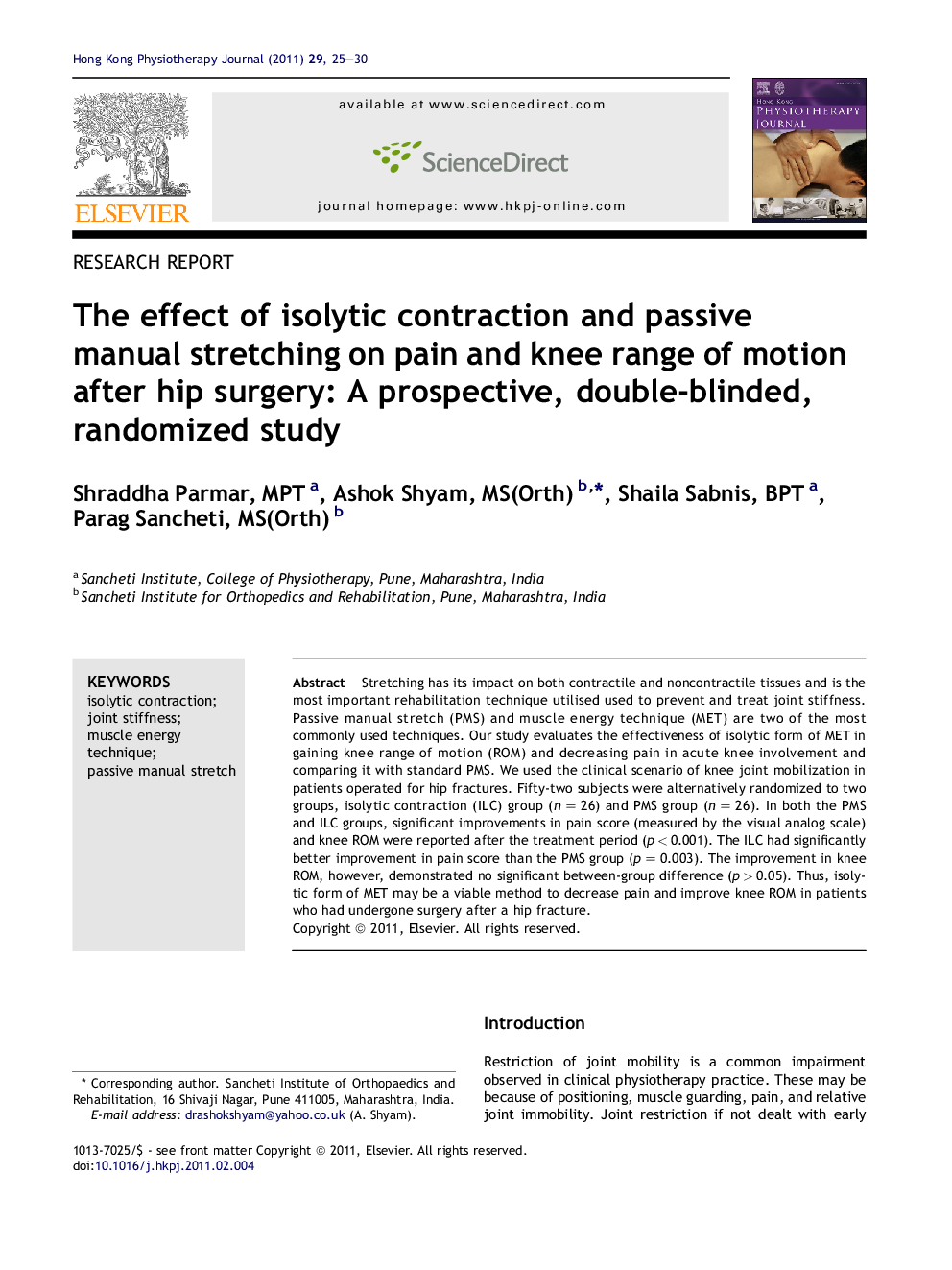| Article ID | Journal | Published Year | Pages | File Type |
|---|---|---|---|---|
| 2618527 | Hong Kong Physiotherapy Journal | 2011 | 6 Pages |
Stretching has its impact on both contractile and noncontractile tissues and is the most important rehabilitation technique utilised used to prevent and treat joint stiffness. Passive manual stretch (PMS) and muscle energy technique (MET) are two of the most commonly used techniques. Our study evaluates the effectiveness of isolytic form of MET in gaining knee range of motion (ROM) and decreasing pain in acute knee involvement and comparing it with standard PMS. We used the clinical scenario of knee joint mobilization in patients operated for hip fractures. Fifty-two subjects were alternatively randomized to two groups, isolytic contraction (ILC) group (n = 26) and PMS group (n = 26). In both the PMS and ILC groups, significant improvements in pain score (measured by the visual analog scale) and knee ROM were reported after the treatment period (p < 0.001). The ILC had significantly better improvement in pain score than the PMS group (p = 0.003). The improvement in knee ROM, however, demonstrated no significant between-group difference (p > 0.05). Thus, isolytic form of MET may be a viable method to decrease pain and improve knee ROM in patients who had undergone surgery after a hip fracture.
